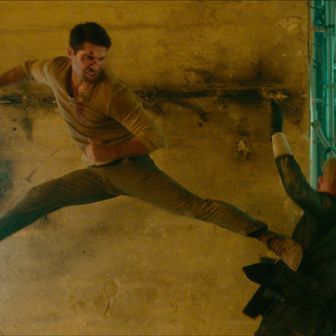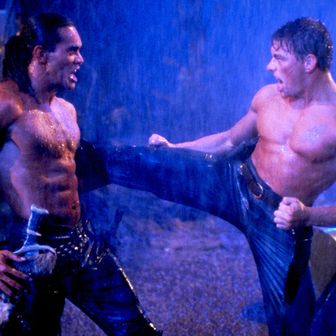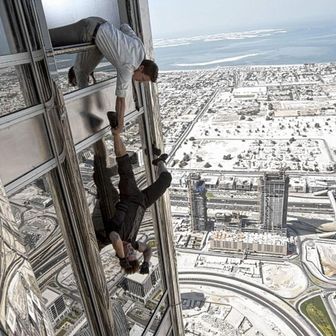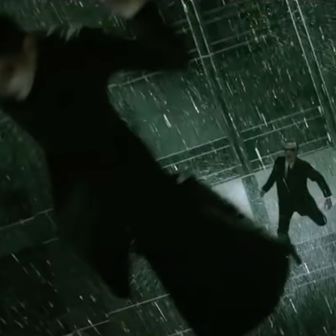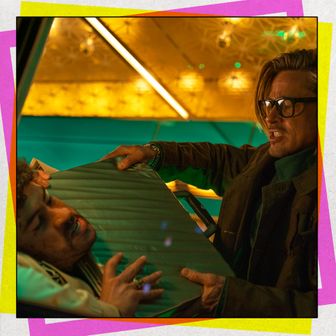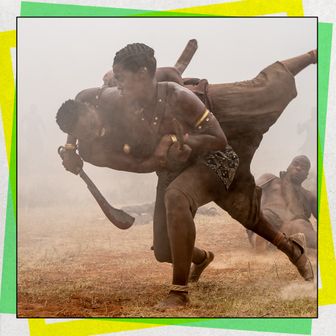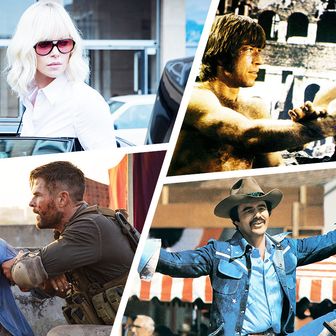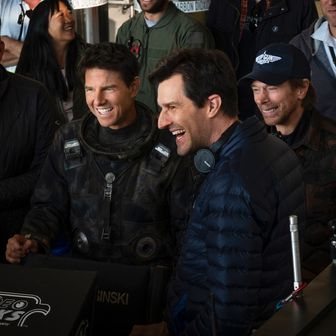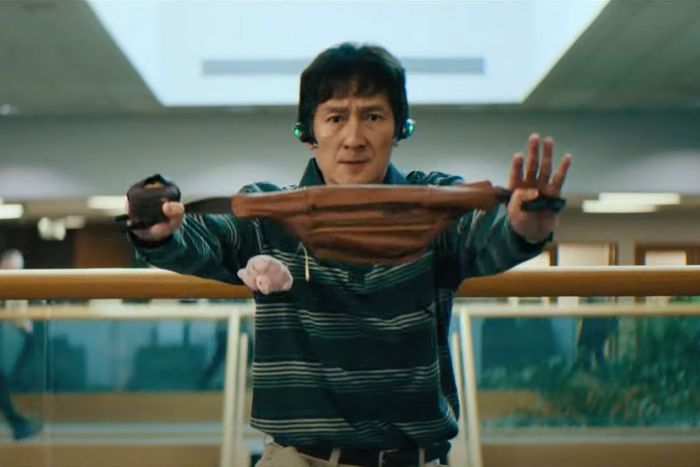
Andy and Brian Le were nominated for a Vulture Stunt Award this year in the category of Best Fight for their work on Ke Huy Quan’s Fanny Pack scene (pictured above) in Everything Everywhere All At Once. The two martial artists, fight choreographers, and brothers — who performed in and choreographed scenes for Daniel Kwan and Daniel Scheinert’s multiverse saga, and run the Martial Club YouTube channel — took the occasion to reflect on the history of stunt work that influences their unique take on action drama.
Something that always comes to us naturally is comedy. People look at us and think, “Oh, these guys are really high-level martial artists,” and we take our training seriously, but we don’t take ourselves that seriously. We come from the YouTube space. We’ve made a lot of comedy skits. When we first started doing the channel, it wasn’t, “Let’s make the most badass fight scenes.” We didn’t really understand story, we just had a bunch of comedy gags. It came very naturally to us — physical comedy, slapstick comedy. We grew up with that.
Once we started understanding the craft of film more, we started setting our action scenes to narrative. What do you want the audience to feel here? How do you want the audience to root for your hero at this point? Oh, you have to beat him a little bit. Okay. Now how do you want it all to resolve? The hero has to find something to allow him to win, whether it be a trick or some sort of inspiration to get that turnaround. We use that narrative to create our fights, and the comedy just blends in because that’s just who we are.
We’re heavily inspired by Jackie Chan. Everyone else wanted to be the mega badass one-hit wonder. But Jackie plays the opposite. Instead of a hero punching someone, Jackie uses his surroundings — stools, chairs, everything in the room — to make sense and drive the story forward within a fight. So when the Daniels talked about using a riot shield in Everything Everywhere All at Once, we were like, Okay, let’s find out how many ways you can spin a riot shield, and have that whole dynamic range just using the obstacles around us.
With that movie’s fanny-pack fight, we had a moment for the real fans to catch, and it was a little homage to Rumble in the Bronx, where we tied up one of the guns and kicked it off. A lot of the fanny-pack fight was from our martial-arts and weapons training, and a lot we picked up from watching movies. There’s this kung fu weapon, it’s called a chain whip. It’s a nine-section chain whip where you can swing it around and you wield it around your neck or in between your legs or under your arms. Having the training and understanding of how to weave around a chain whip, we just replaced it with a fanny pack and that’s when we had the whole sequence. The Daniels were like, “How about you stick that clip up their nose? That’s even funnier.” After that, we have a moment where Ke wraps it around and kicks his opponent down, which we’ve actually done in a YouTube Short. Again, it was inspired by the concept of using your surroundings and making them into a weapon.
Something that we have to be conscious of when creating the scenes is how everyone’s going to take them seriously. How do we play this part up, drive the story forward, but just add that comedy element to it to push it over the top? There’s one specific point within one of our fight’s — our two-versus-one with Michelle Yeoh — when there’s a little standoff. For the huge fans out there, there’s a little homage that we took from Michelle when she was in Supercop. The stance. She goes like boom, boom, boom. We said, “Hey, let’s tell her to do this and see if she recognizes it.” And on the day when we said, “Can you hit this stance?” She was like, “I know this.” For us as fans, knowing every punch and kick she’s done onscreen, just having that conversation with her was … even today when we talk to her and she tells us stories about her period in Hong Kong, it’s like, wow.
We pay homage to the Hong Kong films. There is a genre that martial artist and filmmaker Sammo Hung actually created. Have you ever heard of jiāngshī? It’s the Chinese hopping vampires from Chinese mythological folklore. That’s a genre that we really want to tackle where we can combine the best of both horror and action comedy all in one. There’s fear in stunt work. Take the Clock Tower scene in Project A. They only got the shot because Jackie Chan physically couldn’t hold onto the tower anymore. The scene shows how human he is. You’re facing a very primal part of being human, and that’s your fear.
Or take the Police Story scene when he jumps off the railing. There are interviews where Jackie talks about how he set up for that stunt and how nervous he was. He was shooting Sammo’s film, Heart of Dragon, in the daytime, and he was shooting Police Story at night. Imagine the middle of night, he’s jumping off this railing, he’s getting electrocuted. And then he takes a little nap, walks on the set of Heart of Dragon.
If you’re willing to take your craft that far just to get a shot, that’s super inspiring. Whenever we need the energy to pull any stunt we need, we think about, Dude, you think this is hard? Think about what the guys in that generation had to do. We call it the Hong Kong spirit. It’s crazy because it’s not only Jackie, but it’s his stunt team and every stuntman. We put our lives on the line for the job.
This conversation was edited and condensed for clarity.



